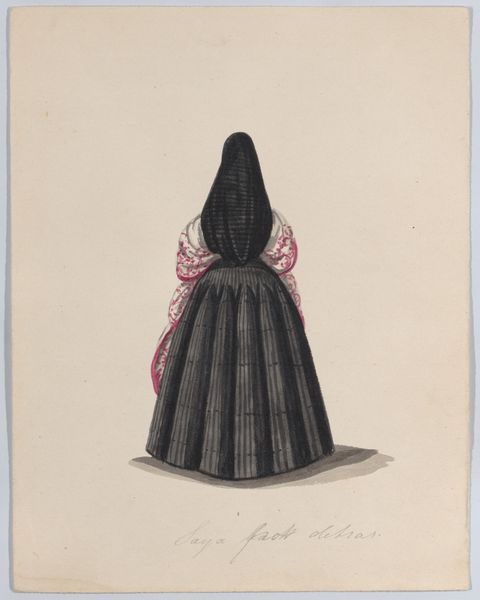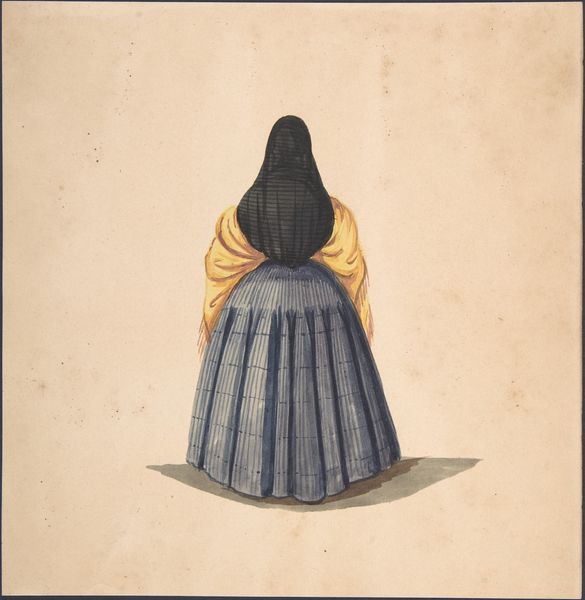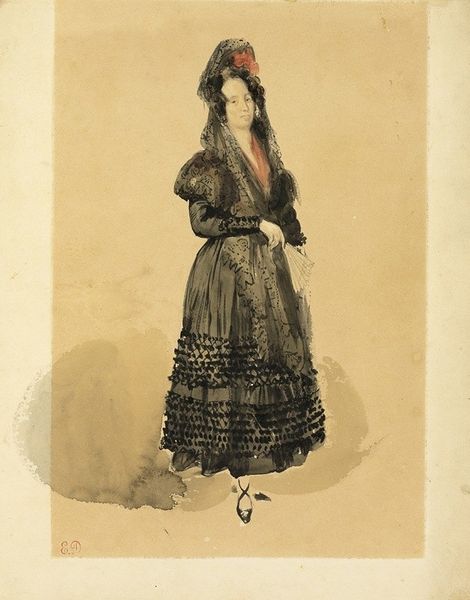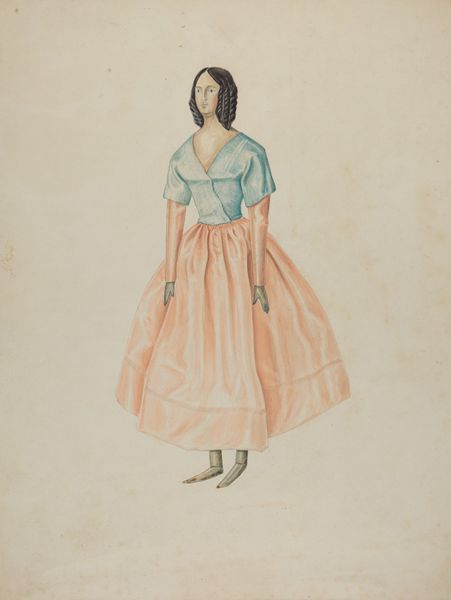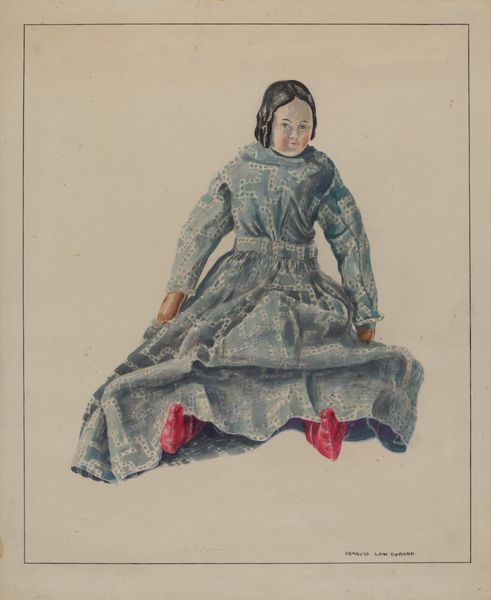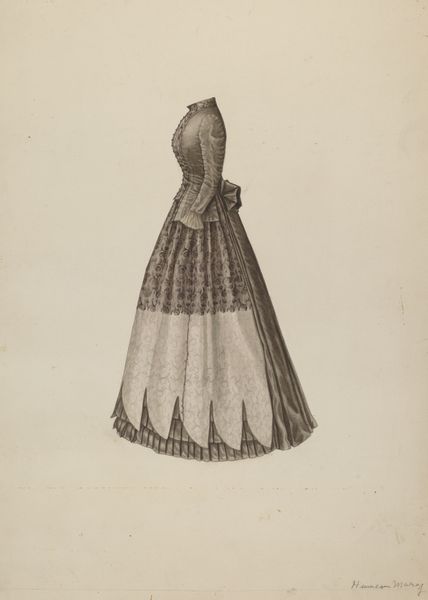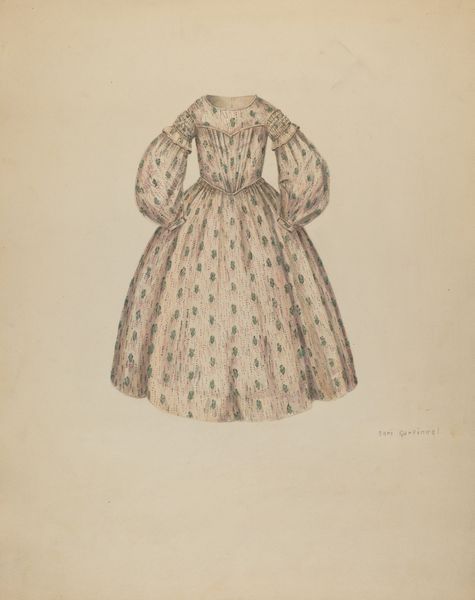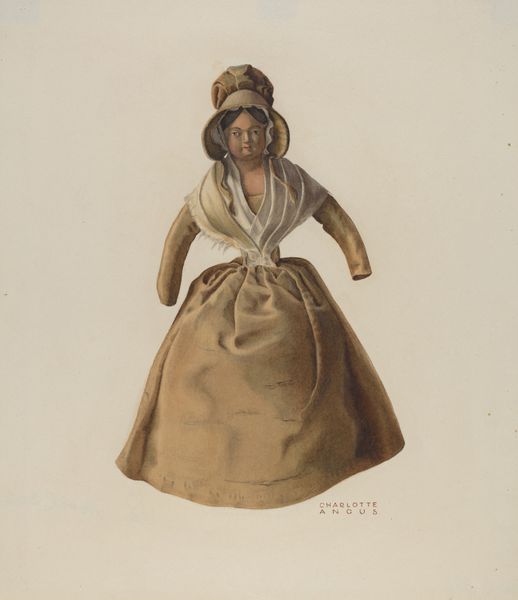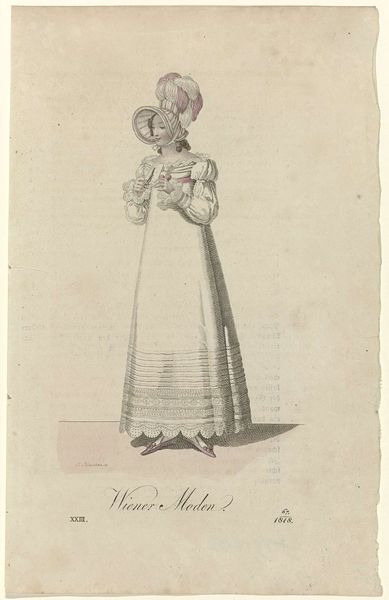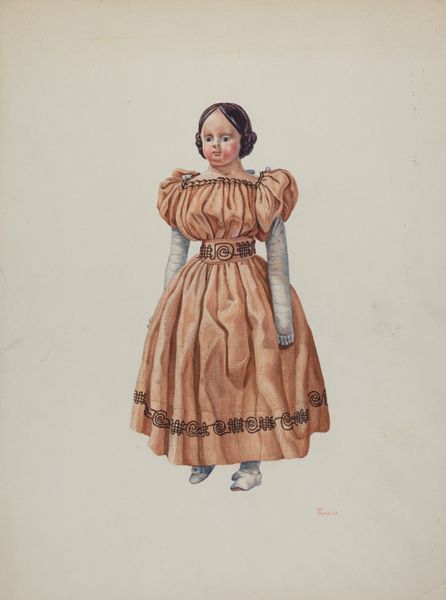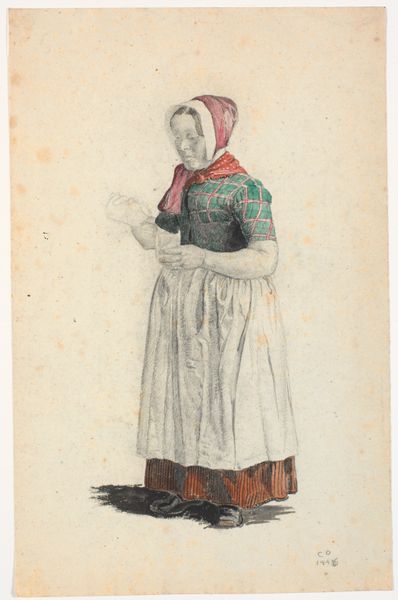
drawing, print, paper, watercolor
#
portrait
#
drawing
# print
#
figuration
#
paper
#
watercolor
#
romanticism
#
watercolour illustration
#
genre-painting
Dimensions: sheet: 9 1/8 x 9 1/4 in. (23.2 x 23.5 cm)
Copyright: Public Domain
Editor: This is "A Standing Woman Seen from the Back," a watercolor on paper from sometime between 1840 and 1850 by an anonymous artist, and it's currently at the Met. It’s kind of… intriguing. I mean, it’s just the back of a woman, but something about the intense blue of the skirt feels almost powerful. What do you make of this piece? Curator: Oh, I’m so glad you picked up on the blue! Isn’t it extraordinary? For me, this little watercolour feels like a secret whispered across time. Consider that back view: it's inherently intimate, a glimpse we usually don't get, right? And that blue… not quite celebratory, but dignified, self-contained. I wonder what she’s thinking, what she's looking at. Does that intrigue you? Editor: It does, actually! I hadn't thought about the intimacy of the back view. Is it common to see portraiture like this from this period? Curator: Not particularly, which is part of its charm. The Romantic era did value feeling and individual experience, and maybe this is a quiet rebellion against the formal, face-forward portraits of the time. A refusal to be defined by outward appearance. Do you sense a story being implied here? Editor: Maybe! I was so focused on the visual, I didn't even consider a narrative element. Curator: And that's the joy of it, isn’t it? A little unassuming watercolour, sparking endless questions. And maybe that's the story - the one we invent. It could be argued that this artwork exists only when somebody contemplates it, right now! Editor: So it really is about looking at art differently, maybe more intuitively. Thank you, that was really interesting.
Comments
No comments
Be the first to comment and join the conversation on the ultimate creative platform.
